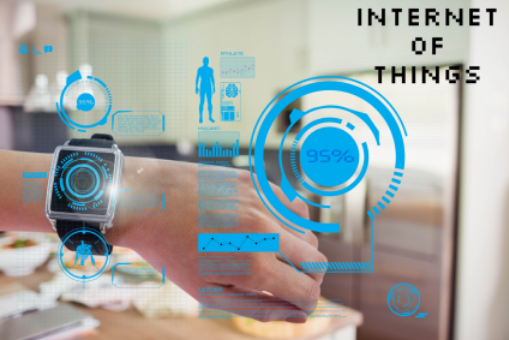Building a Robust Software Development Lifecycle (SDLC) with IoT in Mind
The Internet of Things (IoT) has transformed how we interact with our environment in today’s digitally connected world. From smart home appliances to industrial sensors, IoT devices are everywhere and produce enormous volumes of data. Hence, it is crucial to develop software systems that efficiently use this data while guaranteeing security, dependability, and scalability. To do this, companies and developers must modify their software development lifecycles (SDLC) to incorporate IoT factors. In this article, we will examine the essential components of developing a solid SDLC with the Internet of Things, with a focus on the significance of strategy, security, testing, and scalability.
Understanding the IoT Landscape
Understanding the complex and developing IoT landscape is crucial before diving into the SDLC. IoT includes a broad range of gadgets, protocols, and applications. These gadgets gather information from the real world and send it via networks for analysis and use. Applications for IoT are found in a variety of sectors, including industry, healthcare, and agriculture. The following are important factors you should consider when incorporating IoT into your SDLC:
1. Device Diversity: IoT devices come in a variety of shapes, sizes, and functions. The complexity of autonomous vehicles might be as simple as temperature sensors. For software solutions to be effective, it is essential to understand the many types of devices involved.
2. Data Volume: IoT produces enormous volumes of data. To extract value from this data, developers must employ effective data processing, storage, and analysis techniques.
3. Connectivity: IoT devices use numerous communication methods, including Wi-Fi, cellular, and low-power networks like LoRaWAN. It is essential to guarantee reliable data transfer.
4. Real-time Processing: IoT applications frequently need data processing and reaction in real-time. This demand must be handled without causing delays by software systems.
5. Security Challenges: Since many IoT devices operate in physically unsafe environments and communicate sensitive data, it presents new security challenges. It is crucial to ensure data privacy and device security.
Building an IoT-Ready
The following are guidelines you may want to consider for an efficient IoT integration within your SDLC —
1. Strategic Planning: Start with a clear IoT strategy. That is, recognize the objectives of your IoT project, whether they are boosting user experiences, increasing operational efficiency, or getting insights from data. Also, define the objectives, success factors, and scope.
2. Requirements Gathering: In the early stages of development, collect IoT specific requirements. This can be done by determining the different device categories, data kinds, and communication standards that are utilized. Also remember to define your needs for data analysis and storage. This is important as designing the system architecture requires a thorough understanding of the requirements.
3. Architectural Considerations: Create an architecture that is IoT-friendly that can handle a variety of devices, a large amount of data, and real-time processing. You should also want to reduce latency, and for that you should think about using edge computing to process data closer to the source. Lastly, remember to implement scalable and flexible designs to allow for the installation of new IoT devices in the future.
4. Security and Privacy: Security ought to come first or at the very least be at the top of your bucket list. A good starting point in this case could be implementing reliable device access authentication and authorization systems. This could be followed up by encrypting both data at rest and in transit and consistently updating the device firmware to fix security flaws.
5. Development and Integration: To ensure smooth development, select IoT development-friendly platforms and tools for your projects. Also, use development tools and libraries tailored to the Internet of Things and ensure that the transmission and data collecting codes are efficient.
Case Study: Building an IoT-Ready SDLC for Smart Agriculture
Let’s look at a case study involving the creation of an IoT solution for smart agriculture to provide an example of the concepts addressed —
Strategic Planning: The project’s goal is to increase crop productivity by automating watering and monitoring soil conditions. Over the following two years, the strategic objective is to boost agricultural productivity by 20%.
Requirements Gathering: Selecting soil moisture sensors, deciding on LoRaWAN for low-power connectivity, and defining data intervals are requirements. For analysis, data will be kept in a cloud database.
Architectural Considerations: For real-time data processing, the architecture comprises edge nodes close to the sensors. To be analyzed, data is sent to a central server. Future additions of additional sensors are possible because of a modular architecture.
Security and Privacy: Device authentication, encrypted data transmission, and routine firmware updates are all examples of security measures. Farmer data is anonymized to protect user privacy.
Development and Integration: IoT development tools that work with LoRaWAN are used. The implementation of device management features and the writing of efficient data gathering and transmission code.
Conclusion
Building solid and efficient IoT solutions requires integrating IoT into your SDLC. Design architectures that can accommodate the diversity of IoT devices and the volume of data by starting with a clear strategy and thorough requirements collecting. Put security and privacy first while developing your system, and test it thoroughly. Utilize data analytics to gain insights, make plans for scalability, and improve performance. Your IoT project will be successful over the long term if you do regular upkeep and updates.
Industry transformation and new opportunities are being made possible by IoT, and companies may take full use of this technology by using a well-structured SDLC that takes IoT requirements into account. You may create IoT solutions that are not only practical and secure but also scalable and flexible enough to adapt to the IoT’s changing needs by implementing these concepts and best practices.

